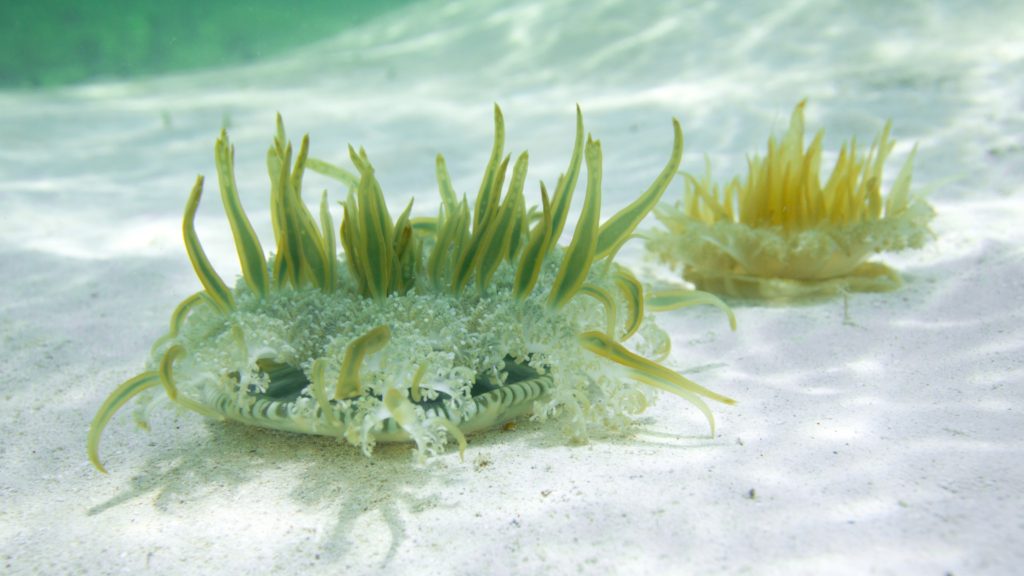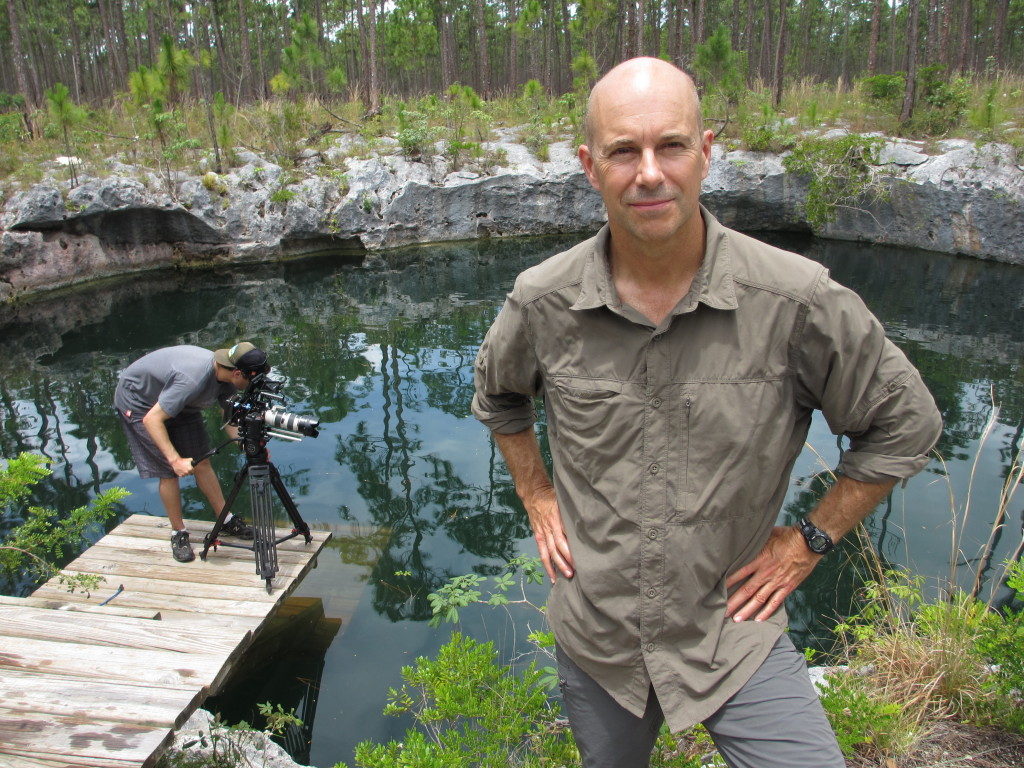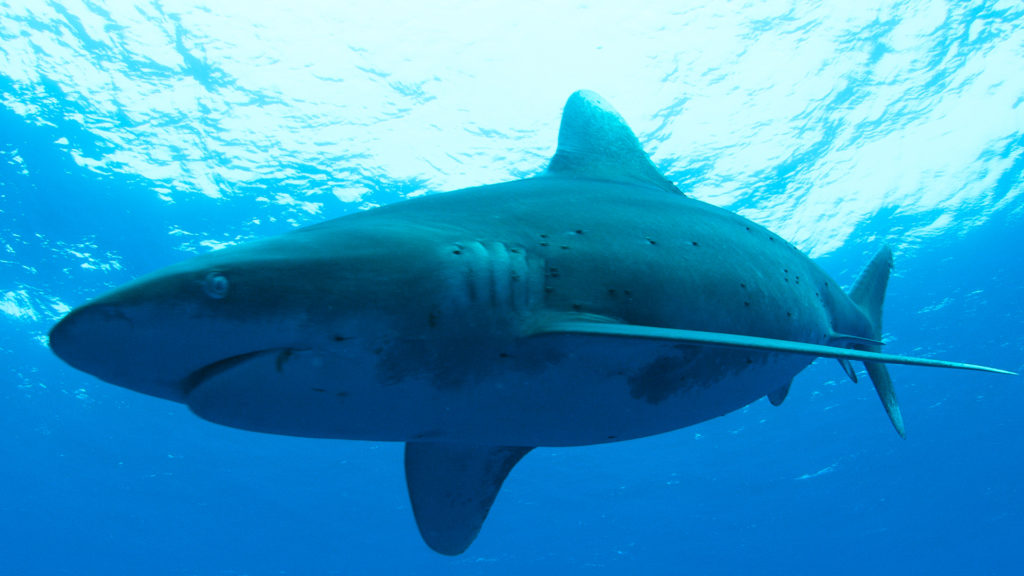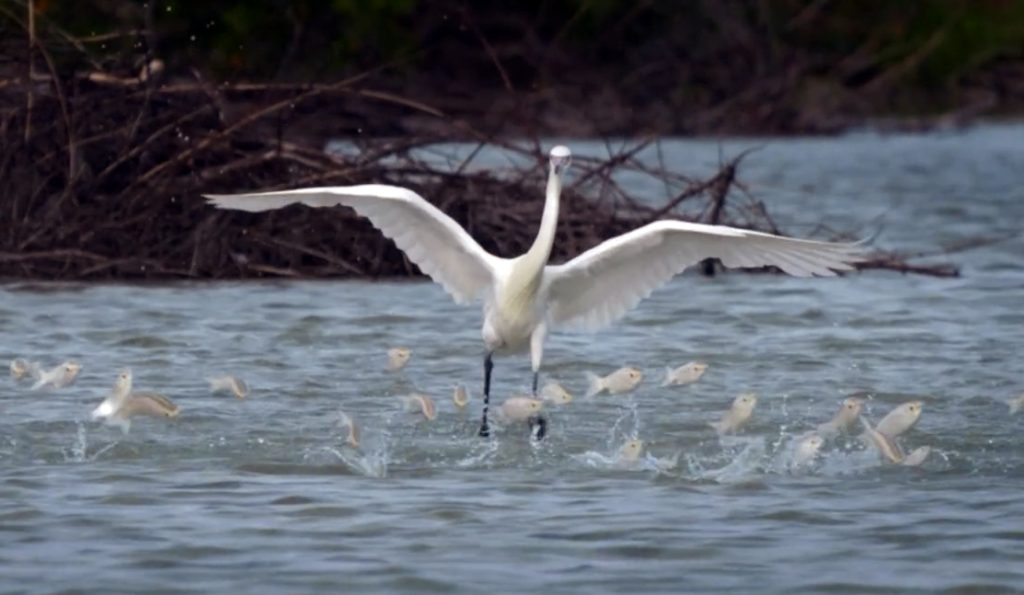Interview with Andy Casagrande for World Oceans Day

In the lead up to World Oceans Day on June 8, we spoke with award winning cinematographer Andy Casagrande. Andy specializes in wildlife and natural history documentaries around the world.
Andy’s vision is to inspire people to care about our planet and its vanishing wildlife. For Bahama Blue, Andy filmed numerous underwater sequences with animals like Sperm Whales, Blainville’s Beaked Whales, Manatees, Octopuses and Sharks.
People are always curious about his experiences with the last. Here are Andy’s thoughts about diving with this often misunderstood creature, the shark:
Diving with sharks can be a rather dangerous activity for obvious reasons. Sharks are wild predators that specialize in hunting and feeding on prey that sometimes resembles the same shape & size as a human. Thus, it’s not hard to understand why diving with sharks can be a bit daunting. However, on most occasions, if you use common sense and don’t dive in murky water, don’t dive with bait, avoid contact with the sharks and simply don’t freak out, you can enjoy these surreal underwater encounters with these living sea monsters.
When I say sea monsters, I’m not saying sharks are monsters, quite the contrary. Sharks are simply marine predators that have been around millions of years hunting their food to survive. They are not malicious and menacing, they are merely existing.
I have been diving with ‘dangerous’ sharks worldwide for the past 15 years, with my specialty being Great White Sharks, and luckily, I have never been bitten by a shark. I say ‘luckily’ because yes, luck does play a factor. The bottom line is that every single shark out there is an individual and they all have unique and vastly different personalities. If you are diving with a friendly shark, life is good and you can peacefully share the same liquid space with a majestic top predator. However, If you are swimming with a not-so-friendly-shark or perhaps a hungry or territorial shark, then you should make your safest and calmest exit from the water and stick to watching Bahama Blue instead!
Every year thousands of people flock to the Bahamas for a relaxing vacation on the beach. Other folks want to add some adventure to their travel. How do you remain safe if you decide to go on a Shark Dive?
Andy has some Ocean Awareness tips for these travelers:
Five Tips for Safe & Successful Shark Dive
1) Avoid diving in murky water with sharks as this can lead to sharks mistaking you for food.
2) Dive with experienced shark guides and dive operators and always dive with a reliable dive buddy.
3) Don’t get too close to the bait – or you just might become the bait yourself 😉
4) Bring a camera or a small stick to act as a prod, in case the sharks get a bit too “friendly”.
5) Avoid touching the sharks and use common sense to stay safe and have fun!
Thanks Andy!
World Oceans Day is June 8. This year’s theme is Healthy oceans, Healthy planet.
Saturday May 23rd is the World Oceans Day Tweet Chat with Andy Casagrande. Send us your questions via www.twitter.com/BahamaBlueTV or to our Facebook page at www.facebook.com/BahamaBlue
Bahama Blue is a six-part nature series produced by Parallax Film and broadcast on the Love Nature channel in Canada.







